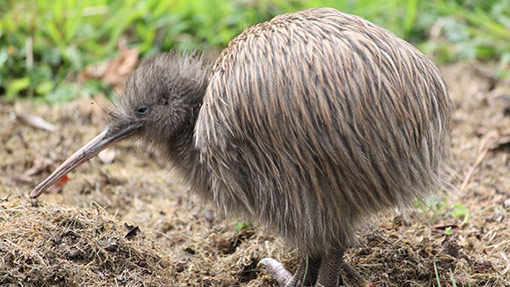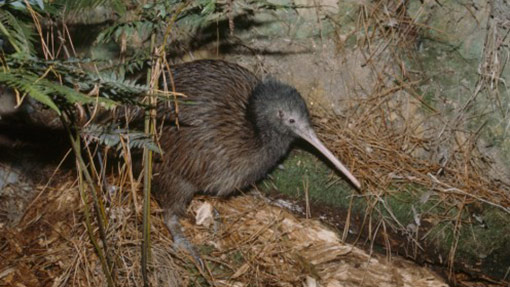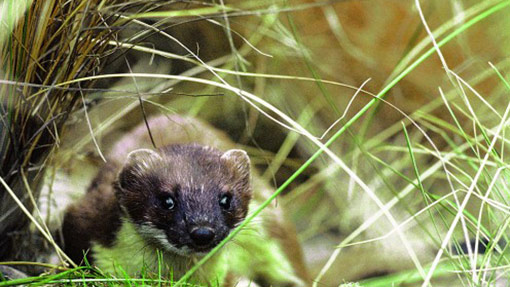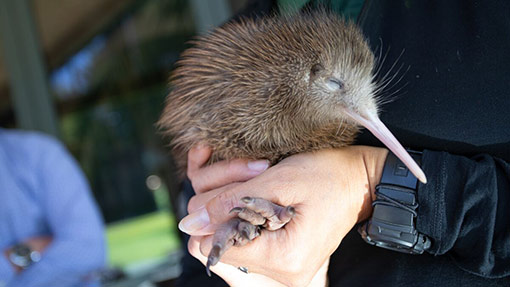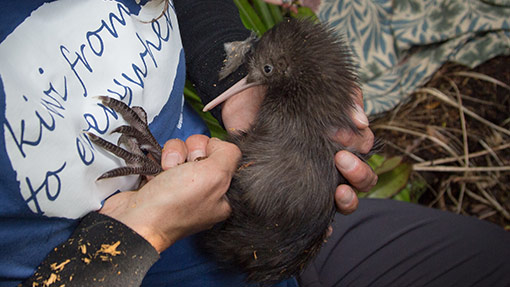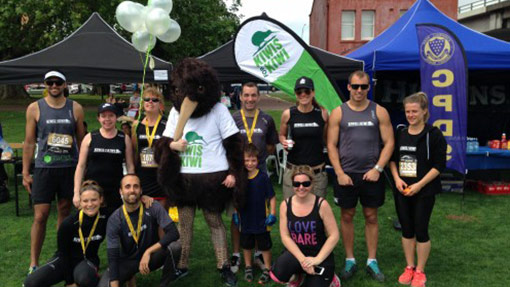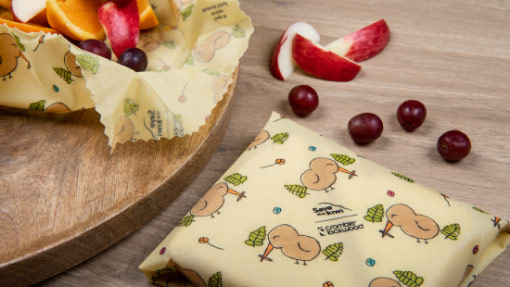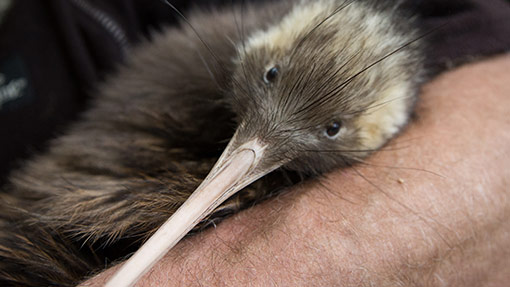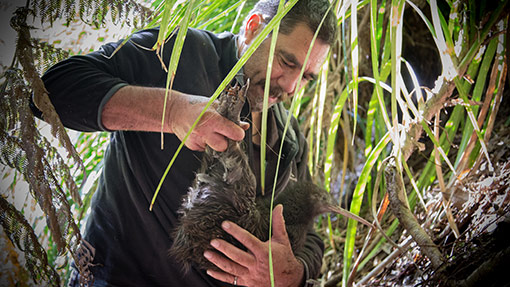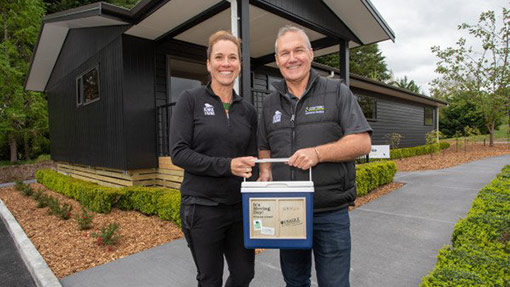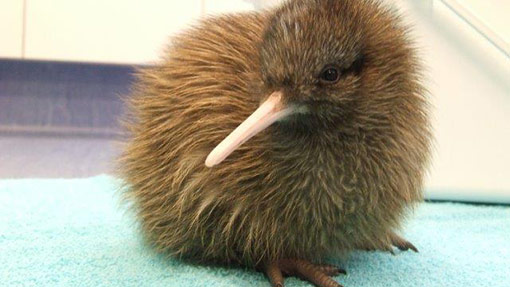Kiwi might not be able to fly, but they’re great when they’re out on the water.
In May, Save the Kiwi led a team to locate and transfer kiwi from Rotoroa Island to Motutapu Island, along with spaces in the Hauraki-Coromandel region where predator control is in place.
“To the motu and back” is part of the Save the Kiwi kōhanga kaupapa, a strategy working to accelerate the population of Coromandel brown kiwi on the mainland. Kiwi eggs lifted in the Hauraki-Coromandel region are transported to the Gallagher Kiwi Burrow in Wairakei, National Kiwi Hatchery in Rotorua or Auckland Zoo where they are hatched and reared. Most of the resulting chicks are destined to join the founder population of kiwi on Motutapu, where they’ll live and breed the next generation of kiwi.
Rotoroa is a midway point between Hauraki-Coromandel and Motutapu. Chicks are released onto the predator-free island at around four weeks of age. Over the next months these little feather-balls forage for food and pack on the weight without the threat of predators like stoats and ferrets ending their lives prematurely, unlike other kiwi in areas of Aotearoa where there’s no predator control.
In Mid-May, a team of specially trained kiwi dogs and their handlers spent time on Rotoroa to locate at-weight kiwi juveniles and transfer them to their new forever homes. ‘At-weight’ means the ‘stoat-proof’ weight of at least 1.2kgs. Above this weight, most kiwi are big and strong enough to fend for themselves should they come face to face with a stoat – public enemy number one to kiwi chicks.
Across the week, the teams located 26 kiwi. 16 of them were transferred by boat to Motutapu Island to join the founding population there, while seven went back to the Hauraki-Coromandel region where they originally came from. The rest remained on Rotoroa because they hadn’t quite hit ‘stoat-proof’ weight so will be included in next year’s muster.
Since the first kiwi were transferred to Motutapu in 2012, 140 have been released, with 53 of them spending time on Rotoroa first. It’s hoped in the very near future kiwi will be transferred from Motutapu back to the Hauraki-Coromandel region.
This kaupapa could not happen without the support of many. A massive thanks must go to the Rotoroa Island Trust for supporting this important work, and to the volunteers who donated their time and expertise to support the muster team across the week, including Ngāi Tai ki Tāmaki as receivers on Motutapu.
Thank you also to contributing kiwi projects from Hauraki-Coromandel, including Whenuakite Kiwi Care Group, Kapowai Kiwi Group, Project Kiwi Trust, Moehau Environment Group, and Thames Coast Kiwi Care, as well as the Department of Conservation. Special thanks to Aaron Power and Annemieke Kregting.
Photo credit: Alex McVinnie
